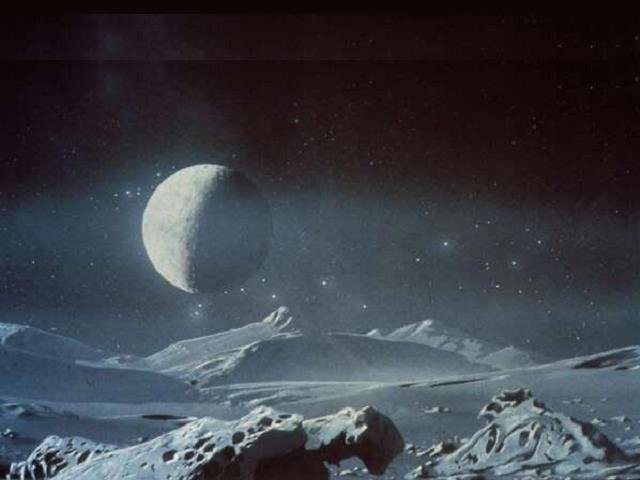NASA Spacecraft "New Horizons" (New Horizons) July 14, 2015 will come to the dwarf planet Pluto at a distance of 12.5 thousand kilometers and will make its first close-up images. In anticipation of this event's website space.com dispels a number of myths around Pluto.
The first myth: a tiny Pluto
Some people think that Pluto is very small celestial body the size of an ordinary asteroid. In reality, the dwarf planet has a diameter of 2,360 kilometers and thousands of Pluto so much more than any object in the Kuiper Belt - the ring of icy bodies beyond Neptune.
Myth Two: On Pluto always dark
Pluto rotates in an eccentric orbit is closer to the Sun 4.4 billion kilometers, is moving away from our star of more than 7 billion kilometers. But scientists believe that the coverage of the planet seems to be on a very gray overcast day on Earth, or on the earth twilight after sunset.

Myth three: Pluto was once a satellite of Neptune
This erroneous theory was disproved in 1965 when they discovered the orbital resonance between Pluto and Neptune. For every three turns around the Sun. Neptune there are two turnover of Pluto, the whole cycle takes 500 years. Orbital resonance between Pluto and Neptune are very stable and preserved for millions of years.
Myth Four: Pluto - it is a world of ice
The surface is covered with ice Pluto indeed, including in the form of frozen nitrogen and methane. But the density of Pluto is such that it is clear to scientists that the planet is primarily a rocky body with an icy shell.
Myth five: Pluto has no atmosphere.
 Researchers have discovered Pluto's atmosphere of nitrogen, carbon monoxide and methane in 1985. According to the results of measurements made in 2010, the planet's atmosphere extends into space for more than 3000 kilometers. As Pluto moves away from the Sun, its atmosphere freezes and is deposited on the surface. When approaching Pluto to the Sun, the solar heat warms the surface, the ice sublimated, turning into gas.
Researchers have discovered Pluto's atmosphere of nitrogen, carbon monoxide and methane in 1985. According to the results of measurements made in 2010, the planet's atmosphere extends into space for more than 3000 kilometers. As Pluto moves away from the Sun, its atmosphere freezes and is deposited on the surface. When approaching Pluto to the Sun, the solar heat warms the surface, the ice sublimated, turning into gas.